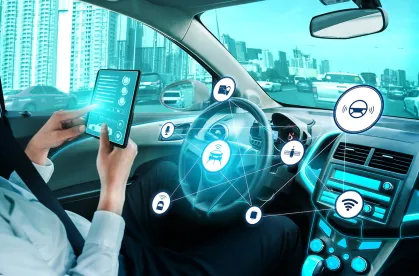In the months and years leading up to the COVID 19 pandemic, media outlets around the world projected the end of personal car ownership and the waning days of pizza delivery drivers. In the not so distant future, personal vehicles would be replaced by a fleet of self-driving cars, hailed by phone or virtual assistant. The consumer could sit in the back seat, working, sleeping, or otherwise entertaining themselves while the car drives down the freeway at breakneck speeds. Similarly, our goods and takeout would maneuver the city in autonomous delivery trucks with drones dropping of packages and dinner at our front door without a single human interaction. That future is still possible, but the timeline appears to continuously get longer and more uncertain as the AV technology space faces development roadblocks and a black swan event no one could have reasonably predicted. The COVID-19 pandemic has not helped make the industry’s futuristic ambitions any more tangible, but those dedicated to their development continue to push ahead in spite of the challenges and uncertainty facing today’s marketplace.
Uncertain what the future would hold in the early months of the COVID-19 pandemic, companies around the globe slashed their research and development budgets, outside funding opportunities and investors dried up, and the consumer’s willingness to buy new products and take risks on cutting edge technologies nearly evaporated. But, once the world began to settle into the temporary new normal of COVID-19, many industry players began to realize the implications for autonomous technologies remains more important than ever before. While budgets and investment opportunities might not be back to where they were before the pandemic hit, development projects and new partnerships have started cropping up as companies look to leverage AV technologies in a world encompassed by social distancing, a wariness for ride-sharing and public transit, and the need for reliable and uninterrupted movement of goods. In fact, a recent study by the Consumer Technology Association noted that a quarter (26%) of consumers now view autonomous delivery technologies more favorably than before the COVID-19 crisis, although they did not note the reason for such rise in favorable sentiment. That said, a recent study conducted by Boston Consulting Group estimated the broad commercialization of AV vehicles for consumers won’t be realized until at least 2025-2026.
In our August 2020 post, The Impact of COVID-19 on Adoption of Autonomous Vehicle Technology, we noted how that although the applications for consumer products might have hit some roadblocks due to COVID-19, AV technology has numerous applications beyond the purpose of consumers commuting and getting around town. From logistics to last mile delivery, the potential applications of AV technology is further reaching than just shuttling soccer teams and families around their communities.
The commercial application of AV technology is starting to be realized in the United States through a recent partnership announced between TuSimple, UPS, Penske, U.S. Xpress, and McLane Company, with a goal of establishing a nationwide autonomous trucking network starting in 2023. Realizing the impact COVID-19 has had on the ability to safely and efficiently transport goods, this partnership noted that an “autonomous freight network is the ‘safest’ and ‘most efficient’ way to bring self-driving trucks to market.” Such a network will allow end-to-end management of the autonomous system through digitally mapped routes, strategically placed terminals, and a monitoring system for fleet operations. Industry participants estimate the application of autonomous technologies will save the logistics industry over $70 billion annually while boosting productivity by over 30 percent.
The implications for TuSimple and its partner’s autonomous network and infrastructure will not be reserved just for the commercial space. It is safe to say the technological advancements and processes adapted and invented by this group will likely have long-standing implications to propel AV technologies for various aspects of consumer commuting and transportation.



 />i
/>i

